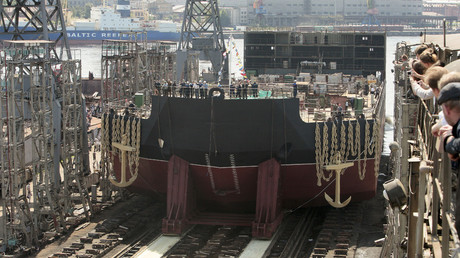China aims to build floating nuclear power plant by 2020
A Chinese company aims to build the country’s first floating nuclear power plant by 2020. Such vessels may provide electricity, heating and desalinated waters to isolated regions. Russia is currently building a similar ship, which is scheduled to go online in 2019.
The Chinese floating power plant is being built by China Shipbuilding Industry Corp. According to a China Daily report, the technical design of the ship has been finalized by the 719 Research Institute, which had been created in 2014 for this specific project, and construction will begin soon in the Hubei province. The project is result of China’s military-civilian cooperation policy, the report said.
The idea to build a floating nuclear power plant is an old one. Back in the early 1970s, the US Army converted a Liberty-class ship to house a 10 MW pressurized water reactor.
The MH-1A was deployed to the Panama Canal Zone, the US unincorporated territory inside the Republic of Panama, and substituting for hydroelectric power and freeing freshwater for the Canal. The Soviet Union too experimented with its nuclear-propelled ships, seeing whether they could be converted to serve as backup electricity providers in case of emergency, but so far no dedicated series of such a power plant was developed.
The idea was revived in the late 2010s with the rise of demand for power for offshore oil and gas drilling and the creation of safer reactor technologies. Russia is currently building a lead ship of its new floating nuclear power plant, the PATES, which is called the Academician Lomonosov. The 21,500-ton towable ship has two 35 MW reactors designed for Russian icebreakers and will be tested in Chukotka in Russia’s Far East.
In China, two competing projects are being developed, according to the newspaper, a 200 MW reactor by China General Nuclear Power Group and a small design by China National Nuclear Power Co. Both are in earlier stages of development. The market for floating nuclear power plants is estimated to be in the tens of billions of dollars in China.

No comments:
Post a Comment
Comments always welcome!